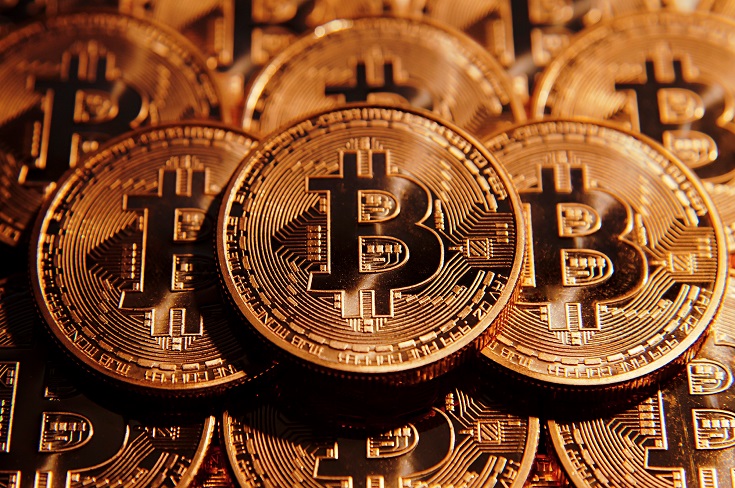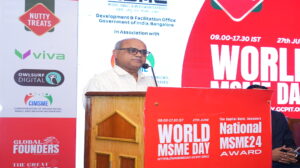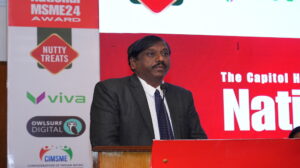Blockchain And The Changing Face Of Money

Sometime toward the end of 2013, the FBI shut down Silk Road, an enterprise run by the very interestingly named Dread Pirate Roberts. It was in this context that a majority heard about a currency called bitcoin. And though it was a beautiful invention, it got bad press.
The Dread Pirate’s efforts to create a marketplace free from authority resulted in exactly the opposite. What Silk Road managed to do was give agencies like the FBI unrestrained rights to snoop under the guise of preventing cybercrime.
Journalist Nathaniel Popper wrote in his book, Digital Gold, that “the unmistakable irony of these wild days was that a technology that had been designed, in no small part, to circumvent government power was now becoming largely driven by and dependent on the attitudes of government officials.”
So how did an internet drug peddler lead us to these discussions on ideal money and freedom?
The idea of money
Many believe that the idea of compensation is an invention as significant as the wheel. Alongside language, it enabled us to solve issues of cooperation that other animals could not.
Money carved out for itself four primary functions: as medium, measure, standard, and store.
For it to perform all these functions, it needed value. So, man came up with coins, where the metal itself was the value. In 1717, Sir Isaac Newton, the then master of the royal mint, put Britain on the gold standard. The gold standard continued in various forms till 1971 when President Nixon nixed it. Since then, the US has been operating on a system of fiat money.
What used to be good, solid, and reassuring metal is now just electrons open to loss, theft, and misappropriation at every stage. In this day and age, shouldn’t there be a more secure, more reliable way to transact business? This is why people have started talking about ideal money—to salvage the idea of money.
The concept of ideal money
Ideal money is a theoretical notion proposed by the mathematician John Nash to stabilize international currencies and evolved as a solution to the Triffin Dilemma. This is the paradox between short-term domestic and long-term international objectives for nations whose currencies served as global reserve currencies.
The nations that owned the global reserve currencies would have to supply the world with an extra supply of currency to meet global demand, thus creating friction between national and global monetary policies.
This led Nash to propose the concept of ideal money that was “intrinsically free of ‘inflationary decadence,’ a true ‘gold standard.’”
This began with the idea of value stabilization in relation to a domestic price index and an international exchange rate that fixed each currency to a standardized basket of commodities (the industrial consumption price index). Ideal money focused on the fluctuations and long-term perceived value of money, with an ideal inflation rate as close to zero as possible.
When you look at it, this accurately describes bitcoin’s disinflationary design: decreasing its inflationary nature by halving new currency issuance at regular intervals.
Which brings us to the bitcoin
In 2008, a certain Satoshi Nakamoto published a paper in which he unveiled bitcoin, a peer-to-peer cryptocurrency and digital payment system. Since it required no intermediary, the concept of the blockchain was used as an administrator or repository, making bitcoin truly decentralized.
No one really knew who Nakamoto was, though. Many believed that Nakamoto was not one man but a group of cipher-altruists who created a universal, decentralized currency that could actually be the way forward with money.
Many also believed that it was Nash’s mind that led to the creation of the bitcoin, as it is his math and his work that lives on in the monetary policies built into the bitcoin protocol. His insight that we should evolve a true form of money that can be used as a true measuring tool that approaches zero inflation is what bitcoin turned out to be.
The bitcoin revolution
The bitcoin was created so that transactions could avoid intermediaries. According to Nakamoto’s own words in his 2008 paper, “I’ve been working on a new electronic cash system that’s fully peer-to-peer, with no trusted third party.” While he made no direct reference to the “third party” being governments or banks, the idea of “trust-less” contains the seeds of anarchic sentiment.
By design, bitcoin is trust-less and borderless and its adoption in its original form can truly destroy the centralized control by governments and banks. This makes it a financial weapon that can take on corrupt, entrenched systems.
Bitcoin was also created in 2008, just after the 2007 financial mess, where extensive banking fraud, fiat inflation, and nasty political machinations were uncovered. The system was broken and needed a fix. But this decentralized “ideal money”—thanks to its open, borderless nature—became ideal for drug peddling, hiring hitmen, and all sorts of monstrosities in the veiled markets of the dark web.
But what was even more worrisome was that governments were getting interested, too. Soon, governments, banks, mainstream investors, and entrepreneurs were looking to cash in on the bitcoin boom.
Bitcoin journalist Sterlin Lujan wrote, “In reality, bitcoin was meant to function as a monetary weapon, as a cryptocurrency poised to undermine authority. Now, it is whitewashed. It is seen as a polite and unassuming technology in order to appease politicians, banksters, and soccer moms.”
But it’s not all dark. There are sunny stories of economic freedom as well. Venezuelans, for example, are using bitcoin to help them bypass high import tariffs and other taxes imposed by the government. And true to the dream of the founding fathers, bitcoin is also making transactions and businesses in Venezuela incorruptible. This is thanks to the blockchain, a unique architecture that can never be tampered with, a solution to the weak institutions we are faced with in many parts of the world.
The true hero of this story: the blockchain
The blockchain is the most disruptive technology of recent times. It could (and will, eventually) completely change how we think about transactions, records, transparency, and the idea of authority. It is a distributed database—dispersed over a system of interconnected computers—that is used to maintain a growing list of records (called blocks).
There’s no centralized record management system, but identical records are spread across everyone connected to a network. They are all updated simultaneously, and transactions only go through when there is a quorum to sign off on them.
Mathematical scrambling is then used to convert an original piece of information into a code (hash). Any attempt to alter the information is immediately apparent because the new hash won’t match the old one.
What Nakamoto’s blockchain did is find a solution to the double-spend problem (also called the Byzantine General’s Problem), a long-standing computer science paradox. Double-spending happens when a digital token is spent more than once. With bitcoin and its timestamp, you can avoid a third party to timestamp transactions. So now, you don’t need a trusted intermediary like a bank to complete a good transaction.
In the bitcoin scenario, the blockchain is public and permission-less, everyone can participate and contribute to the public ledger. Because the blockchain is secure and decentralized consensus can be arrived with it, it becomes ideal for recording events, all kinds of transactions, contracts, identity management, and documenting provenance. This means that all recording could someday become secure, transparent, and decentralized.
The blockchain outside bitcoin
When you think outside the bitcoin, the blockchain is a fantastic secure ledger for any kind of data. It keeps data true, simplifies record keeping, and reduces transaction costs, which makes it ideal for thousands of applications in commerce, finance, and potentially, politics.
In a report, Goldman Sachs outlined five interesting ways in which the blockchain could be used:
- For a network like Airbnb, it could create a secure, tamper-proof system for managing digital credentials and transactions.
- It could be the platform for distributed power generators and individuals to interact and manage transactions.
- It could be the final say in property records and transactions, reducing costs and corruption.
- It could save costs on and reduce errors in securities trading.
- For the finance industry, data stored on a blockchain could help finance firms easily and instantly do a KYC on new customers.
In short, anything that requires maintenance of records and transparency gets a boost. What I envision is a future where entire companies and governments operate in a distributed, automated, and secure fashion.
The brave new world ahead
A brave new world is ahead. But where blockchain will lead us is a guess I’m not willing to make.
In theory, blockchain is potent technology, one that is shared and trusted. It is a transparent ledger which everyone can inspect but no single user controls.
Imagine a currency that is safe from the machinations of government and international politics, giving power back to the people. Imagine being able to trust anyone across the world because the platform or system itself enables trust. Imagine being able to keep an eye on public spending. Imagine politicians whose tax records cannot (and I repeat cannot) be state secrets.
As of writing, there were 307,399 bitcoin transactions today. And there are, as of today, 14,358,642 blockchain wallet users. This information is available out there; it is an open world.
While the hero (or villain) today is bitcoin, the true champion is blockchain. It truly will change us, but hopefully not in the way Dread Pirate Roberts imagined.
Get the monthly dose of Retail Insights






